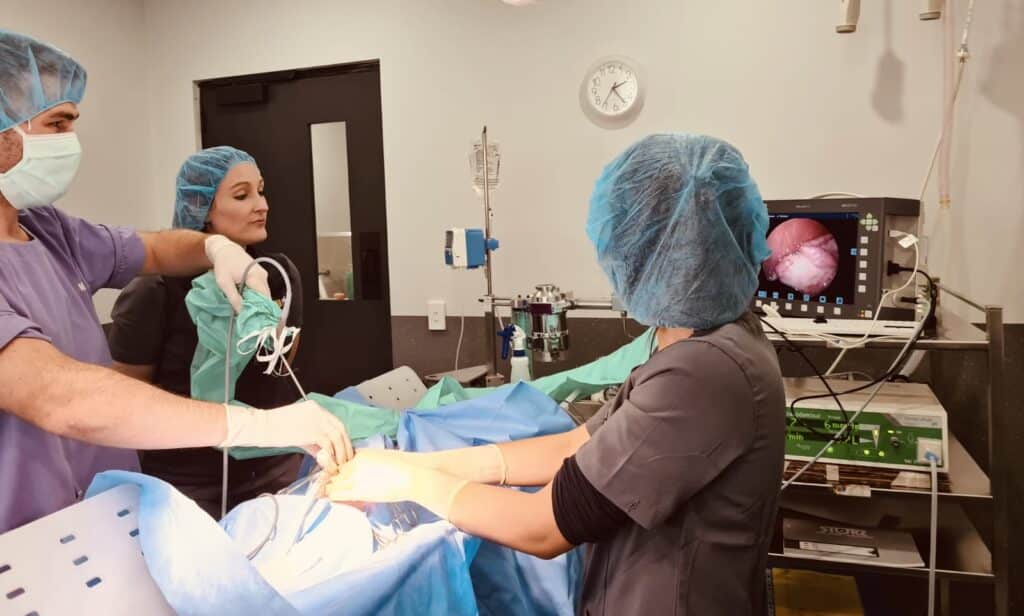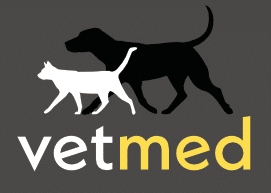The Benefits of Laparoscopic Surgery for Pets

The Key to Success.
We know what happens in your head when your vet mentions the prospect of surgery – you’re instantly horrified by memories of rat dissection at high school, and guilt ridden at the thought of bringing home your once fluffy family member shaved bare, with train track stitches from one end of his body to the other, wearing the cone of shame, while glaring at you accusationally…. Ok stop! Breathe….and remember its 2021 and we have the key – the keyhole surgery key! When your pet needs surgery today, laparoscopic surgical techniques are used for so many procedures resulting in less pain, smaller incisions and a speedy return to vitality and happiness for the paw bearing and the parent!
Laparoscopic surgery is known as keyhole surgery because it is minimally invasive allowing the surgeon to essentially operate using a tiny camera and very fine instruments through tiny ‘keyhole’ openings in the abdomen. The surgeons’ hands never need to come into contact with the body parts being operated on, and the need for larger incisions that require significant stitching after the operation is removed with this approach. Keyhole surgical techniques have been routinely used in human surgeries for the last couple of decades providing human patients with minimally invasive surgery, lower scarring, and faster, less painful recovery. This advanced surgery procedure is now able to be performed for your pet. At Vetmed, our specially trained surgeons routinely use laparoscopic surgery for things like biopsies and de-sexing (spey), as well as for more complicated surgeries such as joint surgeries, managing bladder disease, stomach twisting and more.
We love that your fur baby will need far less time in the ‘cone of shame’ after undergoing laparoscopic surgery, but we also love that it offers your four-legged family member:
1. Far less post-surgical pain and therefore far less need to have to contend with administering pain relief medication at home – an often-challenging exercise for pet owners.
2. Much quicker recovery times. We all know how hard it is for our pooch’s especially to lay low and still for a while, so a reduction in required rest time is welcomed by pets, vets, and owners alike. In fact, for routine procedures, most animals are up and about with normal activities the very next day.
3. Smaller incisions and therefore fewer complications. The traditional way of opening a patient for surgery exposes the body to more risk of infection and takes much longer to heal than when using laparoscopy.
4. A much more precise and accurate surgery! The camera enables our vet team to magnify the surgical site onto the big screen, giving them increased visibility to perform a closer assessment of the area to be operated on and more closely monitor the surgical process. Happy Vet – happy pet!
The clear advantages offered by laparoscopic surgery do not preclude the need for anaesthetic, which for some pet owners, can be a cause for concern. However, pets undergoing laparoscopic procedures often experience shorter time under anaesthesia, faster anaesthetic recovery, and fewer complications as a result. At Vetmed, we are also a stickler for thorough pre-examinations and lab tests, use advanced anaesthetic medications and monitoring equipment, which along with our expert team ensures the small risks that remain with any anaesthetic are further minimised, providing peace of mind to our pet parents.
The Vetmed teams truly are professionals who care, so you’ll know your pet is in good hands throughout their surgery. For more information on laparoscopic surgery for your pet call your nearest Vetmed clinic on 02 9398 1222 (Randwick), 02 9958 0177 (Northbridge), 02 9451 4840 (Forest), or 02 9415 8000 (Lindfield), or enquire online.
